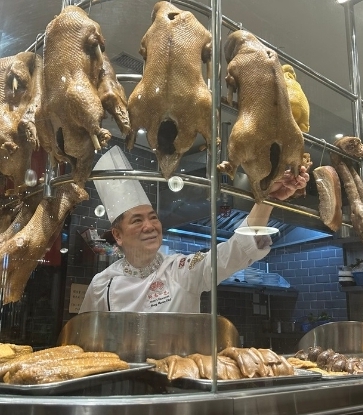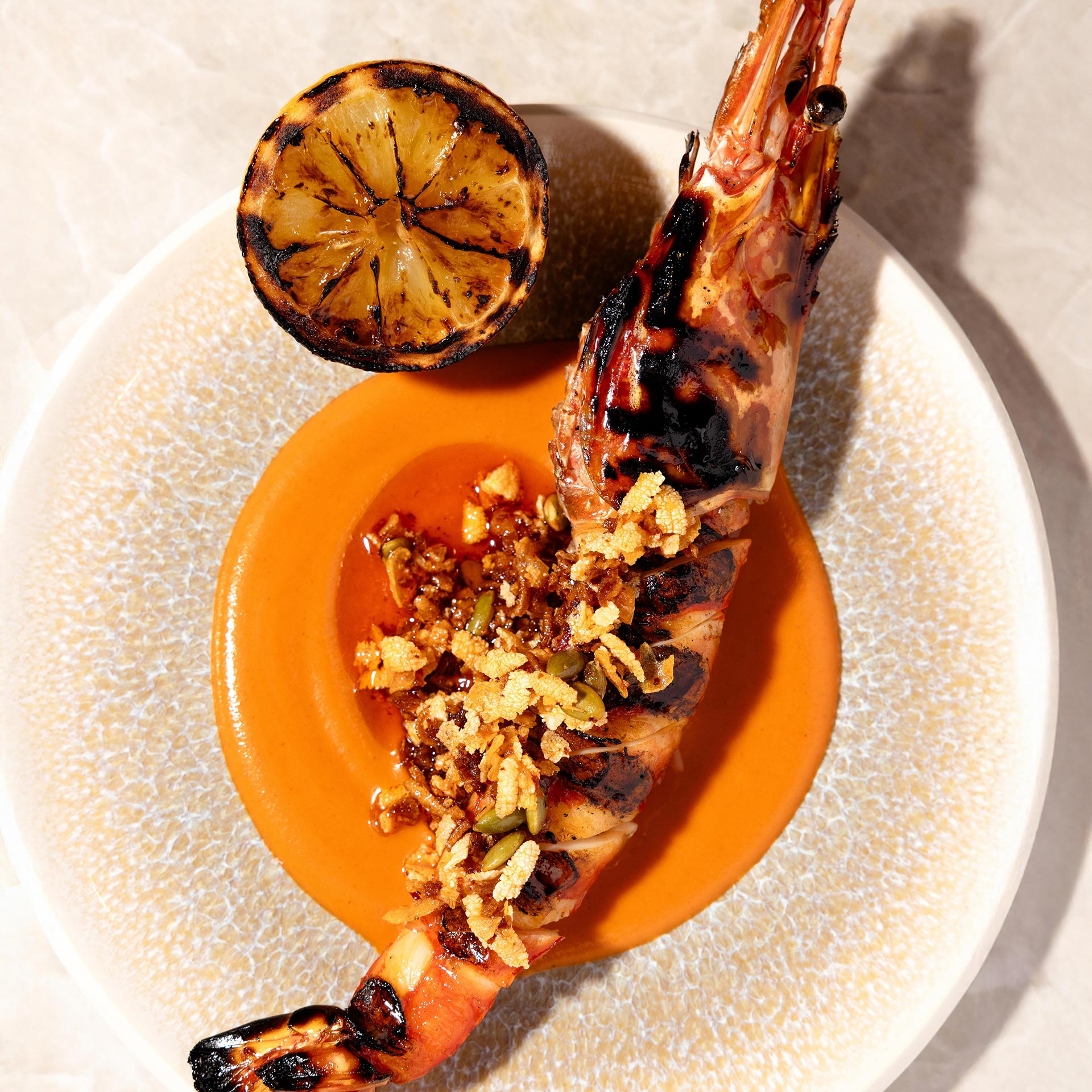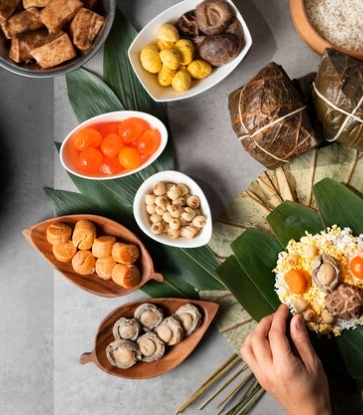It’s an understatement to say the duo behind Sai Kwan Lo Jo is low profile.
Owner Alex and Chef YC both prefer to keep their family names off the record. It also took some convincing before one of them would be in the photo.
“I really don’t think we have an interesting story to tell,” says Alex worryingly before the interview.
But the first-time restauranteur has a lot to be proud of.
When Alex – “who can’t cook” – decided to open a takeout restaurant serving some very unfamiliar dishes from Sai Kwan in 2021, he decided to ask his childhood friend YC – who has more experience working in Chinese kitchens – to help.
Opened during lockdowns and some of the strictest Covid restriction measures, the takeout-only store endured some tough times and was eventually named one of the six new Bib Gourmand restaurants in the latest MICHELIN guide.

The disappearing Sai Kwan noodles
Sai Kwan is the ancient town (where Liwan District is now) in China’s Guangzhou city.While not able to visit Guangzhou to do their research during the pandemic, the duo enlisted relatives in Guangzhou to help sample some of the dishes around the city and describe what they think.
They also recreate the flavours based on their childhood memories.
“Both YC and I’s families came from Guangzhou originally. When I was young, my mother would take me to visit my grandmother in Guangzhou – who lived around the area. We’d go have a bowl of Sai Kwan lai fun,” says Alex.
YC adds, “But it is not the usual lai fun (semi-translucent rice flour and tapioca starch noodles) you get in Hong Kong. It’s a very traditional type from Sai Kwan that was made from overnight rice to have a rough texture. It was considered a poor man’s snack in the past.”
Sai Kwan Lo Jo’s traditional lai fun is made from scratch in the shop every day.
The broth is made with dried shrimp, shiitake and homemade crispy pork lard.
“We don’t make any profit in making those crispy pork lard. We get pork lard from a local Iberian pig farm. As much crispy pork lard has a reputation for being unhealthy in modern days, we hope that by using quality ingredients, it may help people to accept it more easily,” says the founder.
The starch in the noodles thickens the broth as it is cooked with the fragrance of the pork lard.
Once a common street food in Guangzhou, the bowl of noodles is not as popular these days.
One reason is that the humble ingredients would mean a cheaper price tag and profit.
“Some restaurants may add some more expensive ingredients -- like seafood -- to up the price. But it’s the one thing I want to keep as original as I could. I think 90% of the people in Hong Kong wouldn’t know what Sai Kwan lai fun is. So, recreating the noodles in a simple and old-fashioned style is a way of passing on the tradition,” says Alex.
The bowl of noodles is priced merely at HK$26 at the moment.
The duo say a customer visited the shop from Guangzhou.
He told them that a traditional bowl of Sai Kwan lai fun is hard to find in Guangzhou as well. He came all the way to try their version of their lai fun after hearing about it.
“He was quite content afterwards. That made us proud,” says YC.


Homemade deep-fried sticky rice
Another winning item on their menu – deep-fried sticky rice dumplings with Duroc Pork -- came out of a few trials and errors after the shop opened.
“We started with pan-frying the sticky rice dumplings. It’s crispier and more flavourful than the usual steamed version. We made it by cutting a dumpling into a few big slices and pan-fried it. But one day, we thought why not deep-frying it? We tried and we thought it was great,” says YC.
Both pan-fried and deep-fried sticky rice dumplings were once popular snacks, especially after the Dragon Boat Festival.
Restaurants would make use of the leftover dumplings from the festival and serve it in different ways.
It is a rare find around the city nowadays.
“Hence, we call it the ‘Lost Deep-fried Sticky Rice Dumpling,’” says YC.
Every day, YC would soak sticky rice and mung beans overnight till they are softened. Then he wraps the rice, the beans and a slice of Duroc Pork belly in a leaf before steaming and cutting them into pieces.
The chunks are then deep-fried until golden and are served with sugar.
The small shop can only make around 30 to 50 sticky rice dumplings per day.
During the Dragon Boat Festival, the takeout shop will add traditional steamed sticky rice dumplings in whole – which will be made with a salted egg yolk.


Founder: ‘A tribute to my parents’
The team insists that their foods are extremely simple, but they also don’t slack on their sourcing process.
“We tried different types of pork to use in our shop. We think there is a fruity fragrance and a rich sweetness to Duroc pork. We also only use Japanese eggs – as we like to keep our eggs slightly runny after cooked,” says Alex.
To explain why he thinks it is important to take street foods seriously, he says, “We eat to satisfy our hunger and to survive – but small eats like these are not a necessity in life, but a seasoning. It brings you happiness in addition to those practical meals.”
Both YC and Alex say getting the recognition from the MICHELIN guide has been a boost in their confidence as well as a much-needed boost in business.
It meant more to Alex for two other reasons.
“[Being awarded a Bib Gourmand] was a nice tribute to my late mother, whose surname was Kwan and she was the one who took me to these Guangzhou trips when I was young.
“Also, my father was a huge fan of Mak Man Kee (also a Bib Gourmand eatery). So I called him and joked, ‘My shop now has the same award as his beloved Mak Man Kee,’ and he was so happy,” says Alex.
READ MORE: Father's Day: MICHELIN-starred chefs on how their dads shaped their cuisine

















